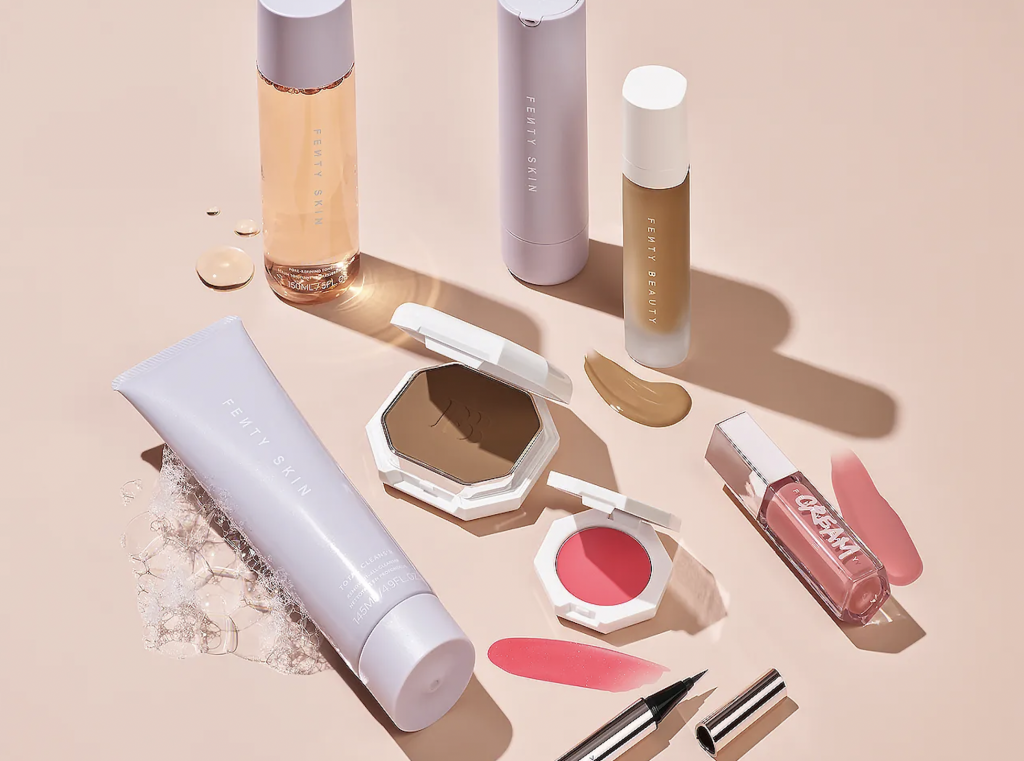On the heels of plummeting sales for fashion and makeup products as consumers have been shut in as a result of the pandemic, beauty brands and off-price retail players are expected to be “the biggest winners in 2021,” CNBC reported, citing a recent report from Wells Fargo retail analysts. Surveying 1,000 U.S. consumers, Wells Fargo found that 40 percent of participants revealed that their “first, post-pandemic” purchases will be makeup, followed by 37 percent who said “going-out apparel,” thereby, signifying a shift away from COVID-centric buying behavior, which has centered largely on homewares, as well as athleisure and loungewear, back to pre-pandemic consumption habits.
Wells Fargo’s findings mirror the sentiments coming from other market entities, such as NPD Group, whose analyst Marshal Cohen, asserted this month that “apparel and footwear sales are starting to show some signs of life.” The market research firm suggests that the roll out of COVID vaccines and the increased desire among consumers to “plan vacations and socialize again” is leading to a “sudden” rise in sales in previously dormant categories. “More than half of U.S. consumers plan to buy apparel in the coming months, making it the top category of anticipated spending, followed by footwear and beauty products,” the Washington Post wrote, citing NPD findings.
And still yet, brands, themselves, are starting to see an uptick. Richard Hayne, the CEO of Urban Outfitters’ parent company URBN, stated in a Q4 earnings call early this month that the group is “seeing signs of customer interest in going-out type apparel beginning to emerge,” which he attributes to “vaccines becom[ing] more widely distributed, new COVID cases continuing to fall, and government restrictions begin[ing] to loosen.” Speaking specifically about the URBN-owned Anthropologie brand, Hayne stated on the call that he noticed a shift in late February when the “list of top 10 selling items on the anthropologie.com website included seven dresses,” which he said was “striking” given with over “the past year, we were lucky if they included one or two dresses.”
In terms of the growing rebound in the apparel and beauty spaces, Wells Fargo analyst Ike Boruchow says that he expects beauty retailers like Ulta to be among “the biggest beneficiaries” of the return to a new sense of normalcy. In that same vein, rival retailer Sephora is similarly slated to benefit from a boost in demand for cosmetics, with parent company LVMH Moët Hennessy Louis Vuitton revealing early this year that the beauty chain was in the midst of ramping up by “strengthen[ing] its offering with new skincare and hair products.” (A recently-filed trademark application for “Fenty Hair,” anyone?)
Both beauty retailers have been busy angling for a return to stores across the U.S. by partnering with big box retailers – Target for Ulta and Kohls for Sephora – for mini shop-in-shop set-ups. In addition to seeking to build upon the pandemic-driven momentum that has been enjoyed by the likes of Target and co., the beauty-and-the-big box partnerships appear to be playing to the call for brands and retailers to “facilitate better retail experiences” in the post-pandemic market, according to Gentler consultant Michael Gatti, whether that be through “engaging and creative in-store experiences” or the introduction of an expanded range of products, such as a revolving roster of buzzy new beauty brands, something that Target has been increasingly working on in recent years.
Elsewhere in the beauty market, rebound momentum is underway. In its annual report in January, LVMH revealed that despite the “sector suffering from the decline in international traveller spend,” its Perfumes and Cosmetics brands, such as Dior, Guerlain, and its Fenty venture with Rihanna, “show[ed] good resilience,” due at least in part to “the growth of skincare and online sales, particularly in Asia.” More recently, L’Oréal saw its shares hit a new record high in March, as the cosmetics titan revealed that it saw continued recovery in its latest quarter, while Estée Lauder Co. posted “outstanding” second-quarter fiscal 2021 results, with CEO Fabrizio Freda touting the group’s “return to growth in [the] second quarter, earlier than we anticipated.”
Beyond Beauty
Looking beyond beauty, Boruchow says that off-price names are situated to fare well in furtherance of the larger return to retail, as they have been known to do in times of market uncertainty. Economic downturns “work in favor” of discount retailers, Fortune asserted in the wake of the Great Recession, noting that the 2007-2009 recession “turned millions of Americans on to shopping at T.J. Maxx, Ross, Burlington, and Marshalls, and they never looked back.” Reflecting on the success of TJX and Ross during the striking market slump almost 15 years ago, the Wall Street Journal reports that “the S&P 500 lost more than 14 percent of its value from December 2007 to December 2010,” and yet, “TJX and Ross Stores gained 55 percent and 147 percent, respectively.”
Like others, these largely brick-and-mortar dependent chains suffered significantly during the pandemic, with full year revenue for TJ Maxx’s parent company TJX, for instance, declining by about 23 percent to approximately $32.1 billion. Widespread store closures were particularly hard-hitting for these companies, of course, given that they pride themselves (and their largely off-line success) on the in-store treasure-hunt shopping experience that they provide for consumers. Falling sales are expected to change soon – particularly if the past is any indication – as “the economy reopens, pandemic-fueled digital sales growth slows down,” per S&P Global, and price sensitive consumers get back into stores.
To meet such anticipated demand, and presumably take advantage of the opportunity that has come from an enduring influx of unsold inventory as retailers have struggled to move merchandise during the pandemic, leading to “thousands” of new vendors for TJX, the Framingham, Massachusetts-headquartered chain says that it plans to continue to invest in its physical retail network, with plans to open 122 new stores this year. That will bring its outposts to a total of almost 4,700. At the same time, TJX is likely to benefit from increasingly attractive real estate terms, as landlords scramble to fill vaccines across the U.S.
As for the state of brick-and-mortar sales more generally, despite enduring expectations that consumers will not revert to relying on physical stores in the same way as they did in a pre-pandemic scenario and instead, continue to shop online en masse, that may not be the full story. “E-commerce has been moderating for a couple quarters now,” S&P Global states, citing Garrett Nelson, senior equity research analyst at CFRA. “We think that [will] continue more drastically as the vaccine is distributed and the pandemic gradually fades,” ultimately, prompting the share between physical store sales and e-commerce “to be more balanced.”














